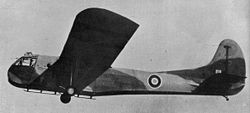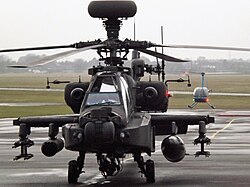| No. 673 Squadron AAC No. 673 Squadron RAF | |
|---|---|
| Active | 1 January 1945 – 25 October 1945 (RAF) April 1996 - December 2020 June 2022 - present |
| Country | |
| Branch | |
| Size | 35 permanent staff, 12 Students |
| Part of | 7 (Training) Regiment Army Air Corps |
| Garrison/HQ | Middle Wallop Flying Station |
| Commanders | |
| Colonel of the Regiment | The Prince of Wales |
| Insignia | |
| Identification symbol |  |
| Aircraft flown | |
| Attack helicopter | Boeing AH64E Apache |
No. 673 Squadron AAC is a squadron of the British Army's Army Air Corps. It was formerly No. 674 Squadron RAF, a glider squadron of the Royal Air Force, active during the Second World War within British India.


